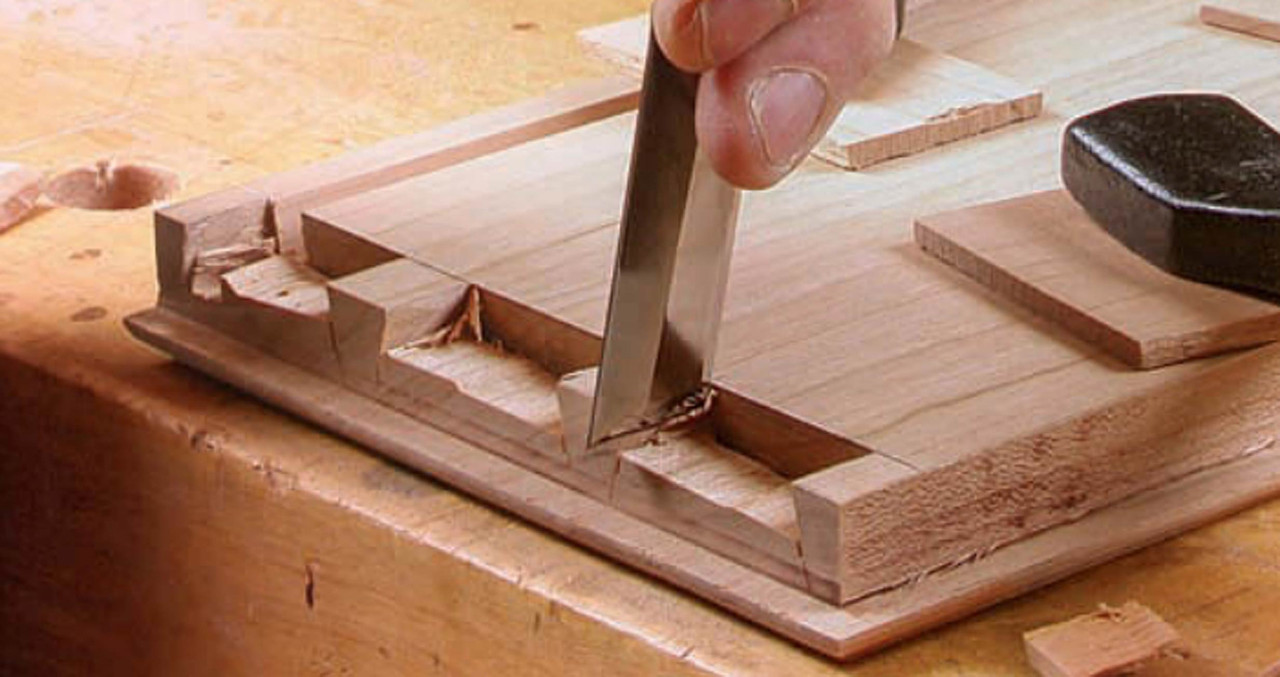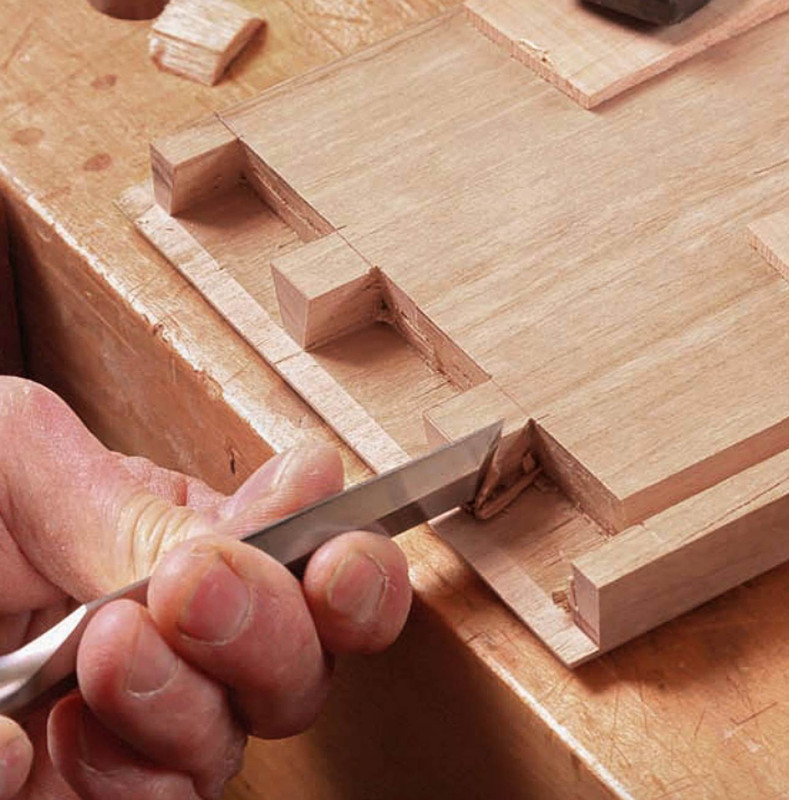Having completed the dovetailing of the case, the next step is to bevel the front face, and rebate the rear for a back panel.
I had been considering a cove in place of a bevel, however when I mocked this up it came across as appearing too busy. So, back to the bevel.
The angle for the bevel was finalised at 55 degrees. This enabled a 6mm (1/4") flat edge and a bevel that ran to roughly 4mm of the first dovetail. A 45 degree bevel would run into the dovetail.
The lines for the bevel were marked and then roughed out on the table saw ...
The table saw is a slider, and the rip fence was used to position spacers, before clamping a panel for cutting the bevel.
The bevel was then finished with a hand plane ...
This Jarrah is particularly interlocked but planes well with both a high cutting angle (the little HNT Gordon palm smoother) and a close set chipbreaker (the Veritas Custom #4).
Once the bevels were completed, the rear rebate was ploughed ...
Now the panels could be assembled into a case once again, and the work examined for tuning.
Three of the bevels needed tuning. This ranged from a smidgeon here ...
... to a largish amount ...
The case was dissembled and the bevelled edged planed down, re-assembled, checked, pulled apart again, planed ...
The rebates at the rear turned out to not require any tuning, with the exception of one corner ...
... where I had obviously forgotten to plane!:\
That was easily rectified ( ... but the case had to be dissembled again). Finally, this is the rear of the case and the completed rebates ...
This is a rebated corner ...
Here are the front bevelled corners ...
This illustrates by the mitres on the corners of the dovetailed case needed to be perfect. Any undercutting would show here.
Next, the drawer dividers need to be done. I'll mention here - since I would appreciate the thoughts of others - that this area has been my biggest headache.
The reason is that my niece would like the drawers to have the appearance of a single board. However, to achieve this, because of the bevels, is quite complicated.
First of all, the table cannot have just two drawers. The width of the drawers will be greater than their depth, and this would likely lead to racking. Consequently, I plan to build three drawers, which will be more favourable for the width vs depth ratio..
Secondly, if the drawers have dividers between them, which they need (since I do not do runners), then there will be a gap between the drawer fronts (which will not flow uninterrupted).
As I see it, there are two choices: the first is to build the drawers with planted fronts. This is not a method I like (but it may be expedient). The second option is to set the dovetailed drawers sides back (recess them) to account for the internal drawer dividers.
Thoughts?
Regards from Perth
Derek

















 Reply With Quote
Reply With Quote







